#Late Period
Text

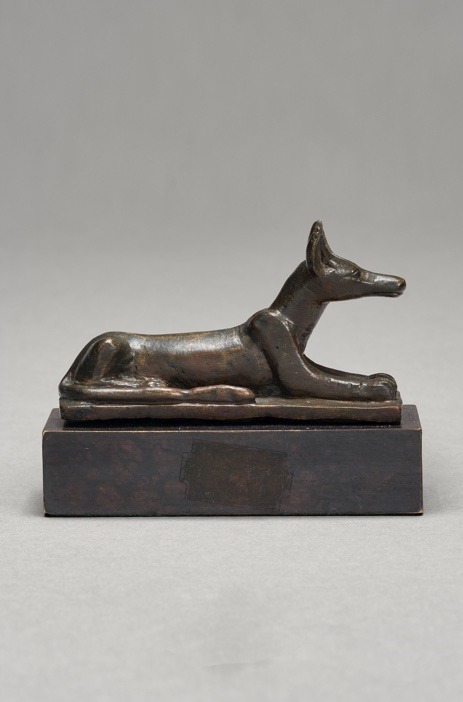
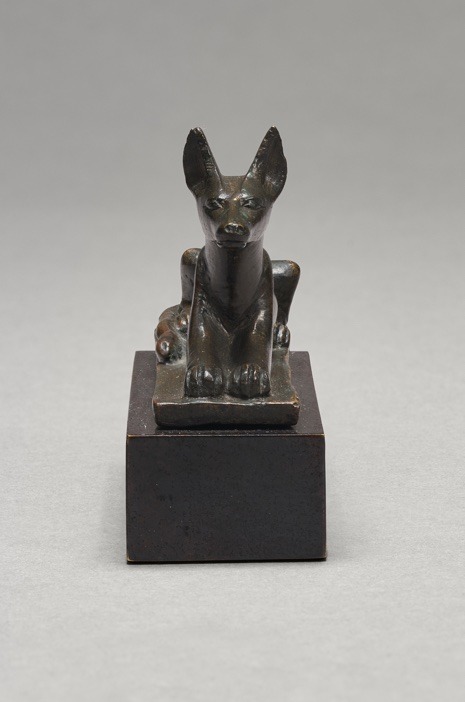
AN EGYPTIAN BRONZE RECLINING JACKAL
LATE PERIOD, 664-332 B.C.
#AN EGYPTIAN BRONZE RECLINING JACKAL#LATE PERIOD#664-332 B.C.#bronze#bronze statue#bronze sculpture#ancient artifacts#archeology#archeolgst#history#history news#ancient history#ancient culture#ancient civilizations#ancient egypt#egyptian history#egyptian antiquities#egyptian art
25 notes
·
View notes
Text
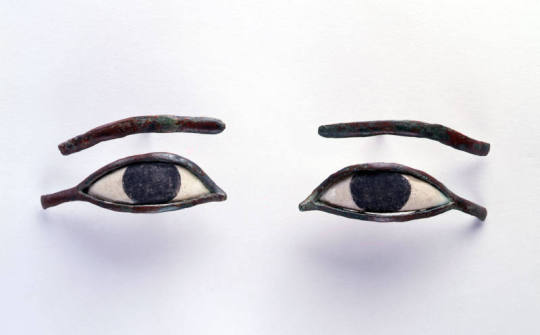
~ Pair of Eye Inlays.
Place of origin: Egypt
Period: Late Period, 25th-26th Dynasty
Date: 722-525 B.C.
Medium: Stone, alabaster, pigment.
#ancient#ancient art#history#museum#archeology#ancient egypt#ancient sculpture#ancient history#archaeology#egyptology#Egyptian#Egypt#pair of eye inlays#late period#25th dynasty#26th Dynasty#722 b.c.#525 b.c.
2K notes
·
View notes
Text

Statuette of pantheistic god Bes
Bronze inlaid with gold.
Late Period or the Ptolemaic Period, 664-30 BC.
Now in the the Fondation Gandur pour l'Art, Geneva.
"Despite his appearance, which changed in many details over time, Bes was deemed beneficent to humans and he was accepted by all classes of Egyptians as a powerful apotropaic deity. He was especially associated with the protection of children and of pregnant women and those giving birth..." Bes was believed to provide protection from snakes among other noxious forces; this statuette shows him in motion stepping on serpents. But Bes was also associated with many of the good things in life: sex, music, and merriment.
"... [In] his later composite form Bes is depicted as the head and sometimes body of a four-armed, winged and many-headed god with the tail of a falcon and the attributes of many of the deities with whom he was combined..."
― Complete Gods and Goddesses of Ancient Egypt, by Richard H. Wilkinson
524 notes
·
View notes
Photo

The falcon-headed crocodile at the Walters Art Museum in Baltimore. Late Period / early Ptolemaic.
435 notes
·
View notes
Text

Composite Ibis Figure
Egypt, Late Period, 712-332 BCE
144 notes
·
View notes
Text

Ancient Egyptian faience inlay depicting a falcon with spread wings. Artist unknown; 4th cent. BCE (Late Period or early Ptolemaic). Now in the Metropolitan Museum of Art.
#art#art history#ancient art#Egypt#Ancient Egypt#Egyptian art#Ancient Egyptian art#Late Period#Ptolemaic#Ptolemaic Egypt#Ptolemaic art#animals in art#birds of prey#falcon#inlay#faience#Metropolitan Museum of Art
888 notes
·
View notes
Text

Head of a lion, Late Period–Ptolemaic Period, 400–300 B.C.
Gypsum plaster,
H. 42.5 x W. 40 cm (16 3/4 x 15 3/4 in.)
On view at The Met Fifth Avenue
#art#history#design#style#archeology#sculpture#antiquity#head#lion#egypt#late period#ptolemaic#gypsum#plaster#the met
31 notes
·
View notes
Text
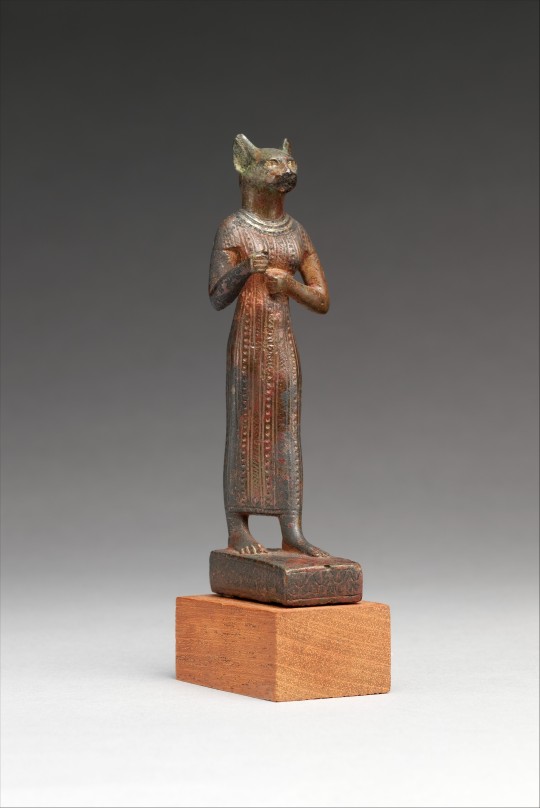
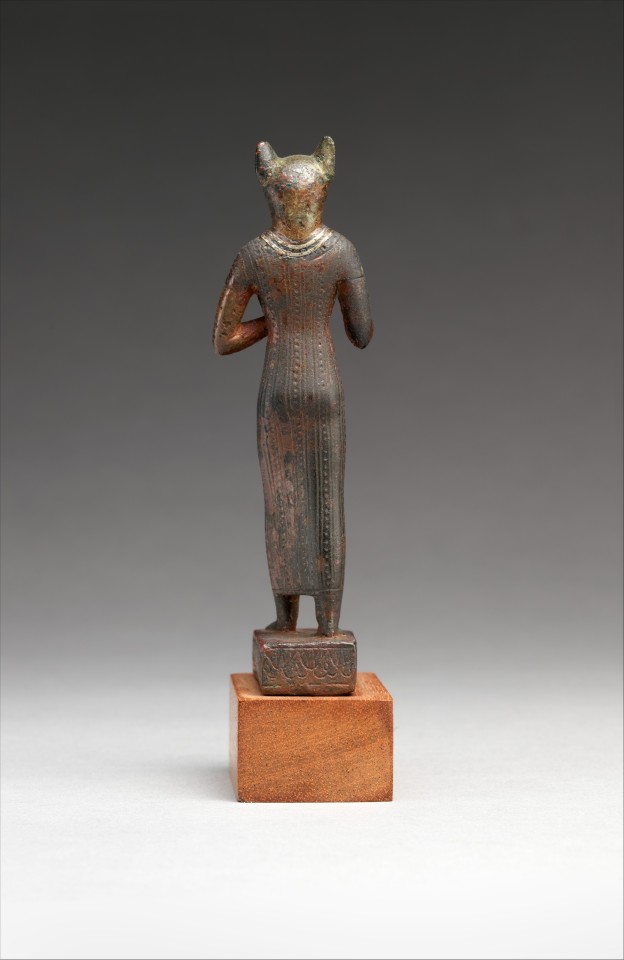
Bastet - Met Museum Collection
Inventory Number: 34.6.1
Late Period–Ptolemaic Period, 664–30 B.C.
Location Information: Location Unlisted
Description:
Bastet, here shown as a cat-headed goddess, was a powerful protective figure who also was known for her fertility. She could be represented with a lion head as well, but as a cat-headed goddess her peaceful traits were emphasized. Her personal adornments and garments are elaborate on statuettes, often more so than other goddesses, and she usually carries numerous attributes. This figure likely once held at least two separately-attached attributes, probably an aegis against her chest and a sistrum in her other hand. Her dress has an elaborate striped pattern with alternating dotted and lined bands. Bastet does not always wear a decorated dress, but it is much more common for her than for other goddesses. The patterning highlights its craftsmanship and quality; also, as some have suggested, the vertical banding may recall the striped fur of a cat.
Great attention to detail and color was lavished on this figure. Inlays are still visible in Bastet’s eyes, and alternating rows of precious metal and black bronze inlay form her broad collar. Also special to this piece is the base; rather than an inscription or blank register, as on most statuettes, this base bears a pattern of repeated lotus blossoms and buds.
#bastet#late period#ptolemaic#met museum#34.6.1#location unlisted#deities#deitiesw#womens clothing#LPWC#PWC
19 notes
·
View notes
Text
Interesting tomb with a vaulted ceiling. That alone tags it as very late, but then you have the artistic style, and it's confirmed.
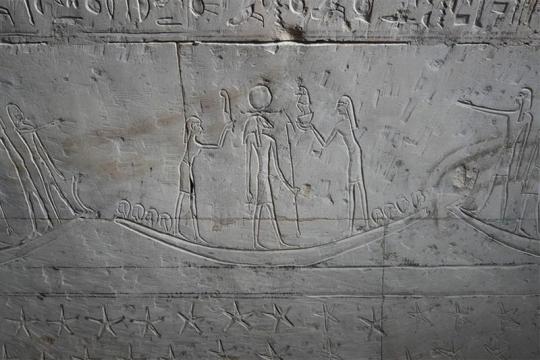
21 notes
·
View notes
Text
If I'm 1 more day late this will be my longest cycle in 3 years
#late period#honestly im hoping i just skip this one so i dont have to deal with cramps and#shark week#jellyfish speaks
7 notes
·
View notes
Text
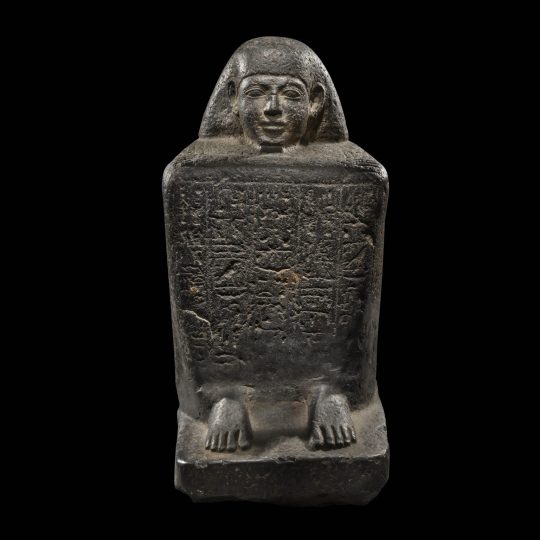

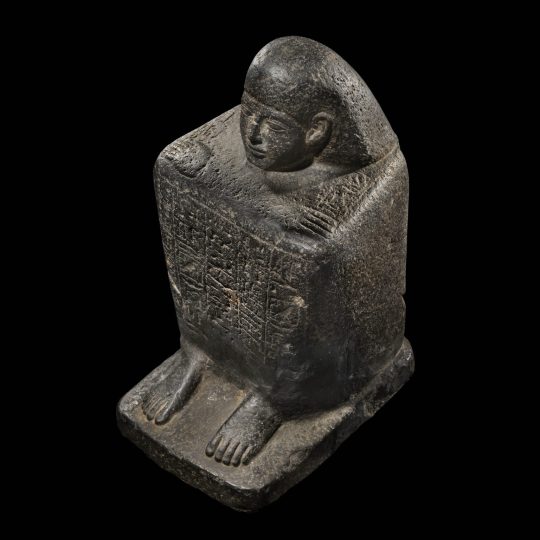
Egyptian Basalt Block Statue
Egyptian · Late Period, Dynasty 26, ca. 664-525 B.C.
#Egyptian Basalt Block Statue#Late Period#Dynasty 26#ca. 664-525 B.C.#statue#ancient artifacts#archeology#archeolgst#history#history news#ancient history#ancient culture#ancient civilizations#ancient egypt#egyptian history#egyptian art
220 notes
·
View notes
Text


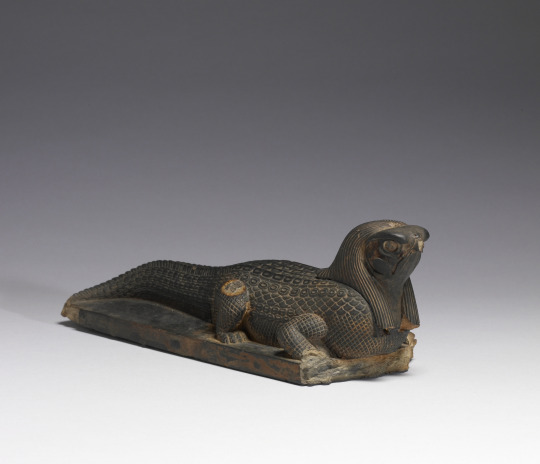
~ Statue of a Crocodile with the Head of a Falcon.
Culture: Egyptian
Date: ca. 380-250 B.C.
Period: Late Period-early Ptolemaic Period; 30th Dynasty
Medium: Steatite
#ancient#ancient art#history#museum#archeology#ancient egypt#ancient sculpture#ancient history#archaeology#Egyptian#egyptology#Egypt#crocodile#falcon#ptolemaic#late period#30th dynasty#steatite#ca. 390 b.c.#ca. 250 b.c.
3K notes
·
View notes
Text

Darius dressed as Pharaoh of Egypt
Beneath a winged sun-disc, Darius I (521-486 BC) is depicted as pharaoh, offering to the jackal-headed god Anubis. The goddess Isis stands behind, shown wearing cow-horns.
The hieroglyphic labels identify the three figures, with Darius written out in phonetic hieroglyphs within the oval cartouche - a motif traditionally reserved for Egyptian kings and Queens.
Late Period, 27th Dynasty, ca. 522-486 BC.
Now in the British Museum. EA37496
129 notes
·
View notes
Text

Two wooden statuettes of cobra-headed goddesses, missing their forearms, at the Ramses and the Gold of the Pharaohs exhibition. They have jackal-headed shoes on. @bigbadjackal, I see those shoes on a lot of different deities -- what do they mean?
When: Late/Ptolemaic Period
Where: Sharm El Sheikh Museum
69 notes
·
View notes
Text
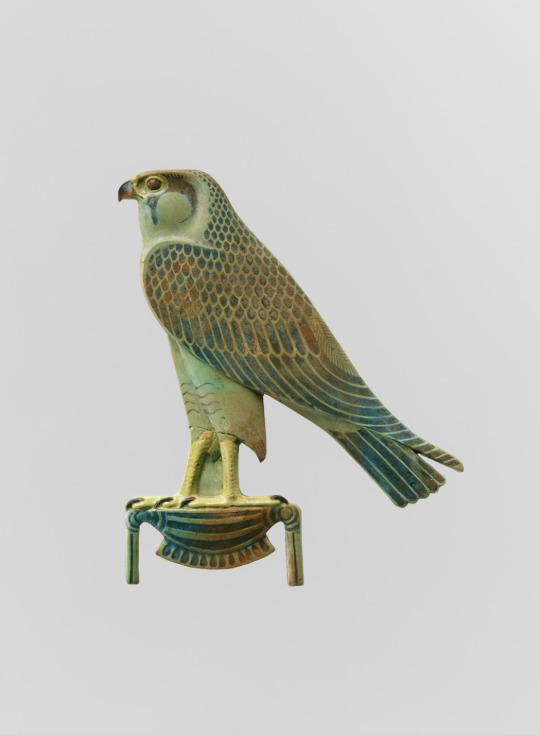
Inlay Depicting "Horus of Gold"
Egypt, Late Period–Ptolemaic Period, 4th century B.C
161 notes
·
View notes
Text
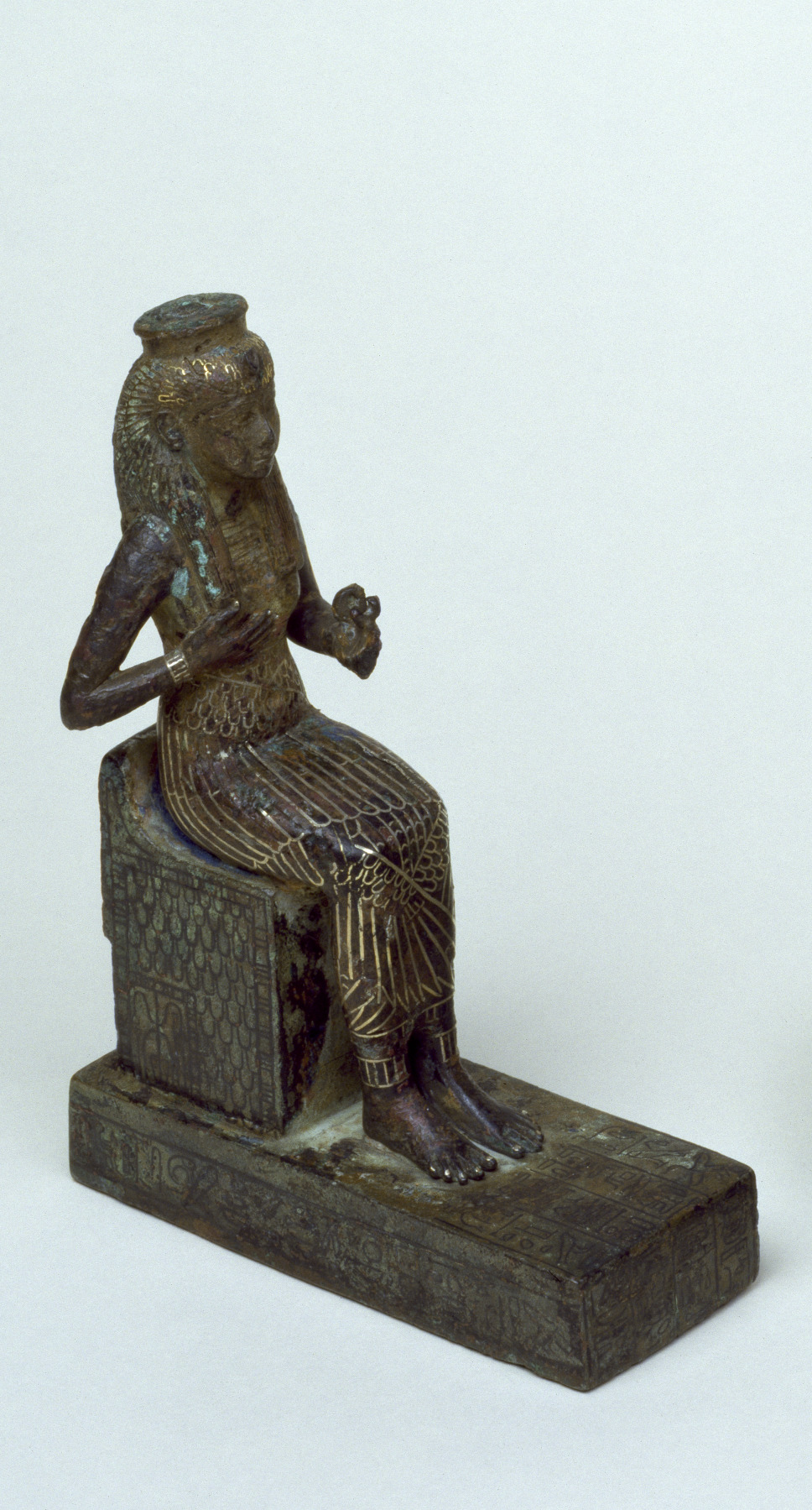
Seated statuette (bronze with gold and electrum inlay) of the Egyptian goddess Isis. The goddess is shown cupping her right breast, which she would have offered to her infant son Horus (now lost). Artist unknown; ca. 650-550 BCE. Now in the Walters Art Museum, Baltimore. Photo credit: Walters Art Museum.
#art#art history#ancient art#Egypt#Ancient Egypt#Egyptian art#Ancient Egyptian art#Egyptian religion#Ancient Egyptian religion#kemetic#Goddess Isis#Late Period#sculpture#statuette#metalwork#bronze#bronzework#Walters Art Museum
330 notes
·
View notes